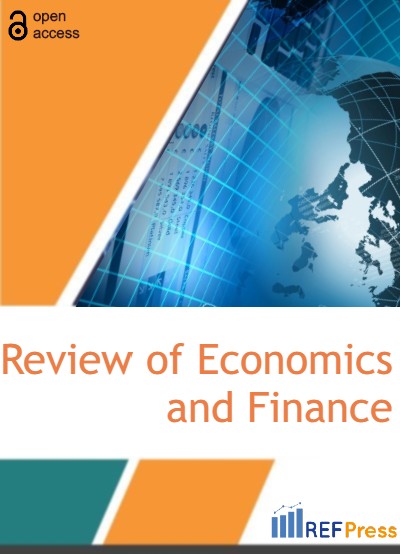
A Study of Inflation, Exchange Rates, Money Supply, and Real GDP, Employing the Cointegration, and Error Correction Models for Annual Data between 1977 to 2020 for Papua New Guinea- a Pacific Island Country
(Pages 1069-1081)Thomas Muthucattu Paul1,*, Ishmael Inore2 and James Kimata3
1Professor and Dean Faculty of Business and Tourism Studies, Solomon Island National University, Kukum Campus, Honiara, Solomon Islands.
2Lecturer and MPhil. Student under supervision of first author at Papua New Guinea University of Technology, Lae-411, Morobe Province, Papua new Guinea.
3Lecturer at Faculty of Science and Technology, Solomon Islands National University, Honiara, Solomon Islands.
DOI: https://doi.org/10.55365/1923.x2023.21.119
Abstract:
For Long term annual data between 1977 and 2020 for Papua New Guinea, there is long term cointegrating relation between the consumer price inflation, the money supply, the Kina -US dollar exchange rates, and real GDP. The error-correcting model establishes that the consumer price inflation is Granger caused by the money supply, the kina-dollar exchange rates, and the real GDP. The signs of the variables are as predicted by the theory: the money supply has the expected positive sign, the Kina-U.S.Dollar depreciation has the expected positive sign, and the real GDP has the expected negative sign .The variance decomposition results shows that one standard deviation shocks in ln consumer price produces shocks of high magnitude in ln exchange rates. This corroborates the Purchasing Power Parity theory that increases in consumer prices produces the depreciation of currency. One standard deviation shock in the money supply produces significant shocks in ln consumer price index and ln exchange rates. This corroborates the monetarist hypothesis that the money supply is really important policy variable causing inflation and exchange rate depreciation. The nominal exchange rate depreciation is also an important variable to explain inflation in an open economy such as Papua New Guinea.
Keywords:
Exchange rates regimes, inflation, small open economy, demand and supply shocks, Money Supply and Money Demand, devaluation, cointegration, Vector Error Correction (VEC) model.
JEL classification:
E2, E24, E31, C01, C58, C32, F10.
How to Cite:
Thomas Muthucattu Paul, Ishmael Inore and James Kimata. A Study of Inflation, Exchange Rates, Money Supply, and Real GDP, Employing the Cointegration, and Error Correction Models for Annual Data between 1977 to 2020 for Papua New Guinea- a Pacific Island Country. [ref]: vol.21.2023. available at: https://refpress.org/ref-vol21-a119/
Licensee REF Press This is an open access article licensed under the terms of the Creative Commons Attribution Non-Commercial License (http://creativecommons.org/licenses/by-nc/3.0/) which permits unrestricted, non-commercial use, distribution and reproduction in any medium, provided the work is properly cited.
